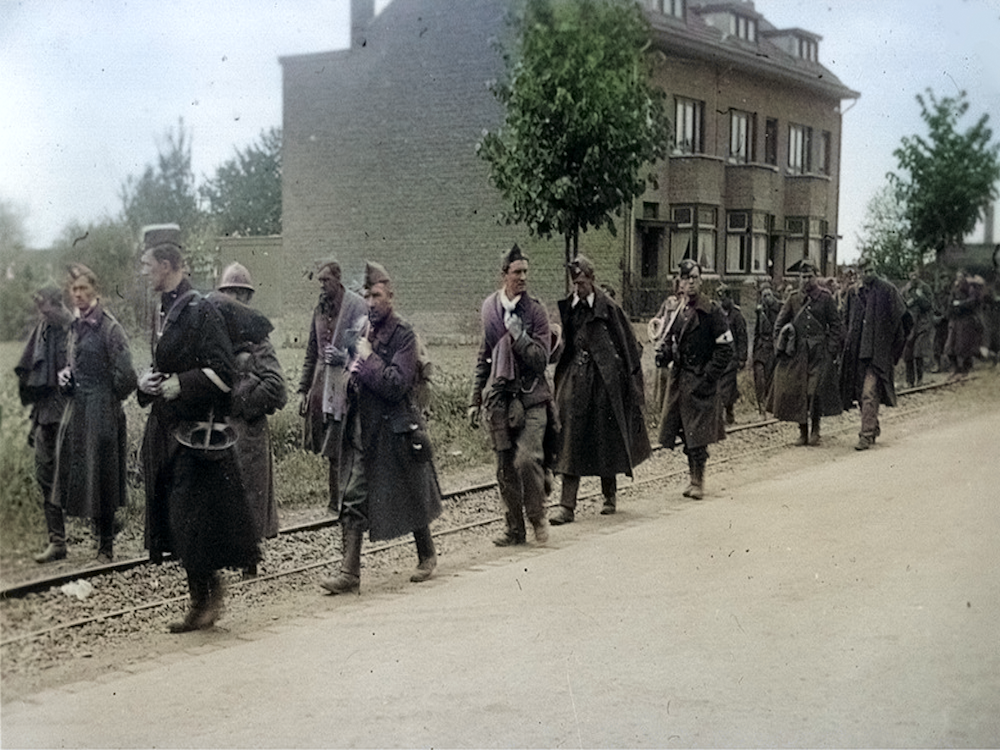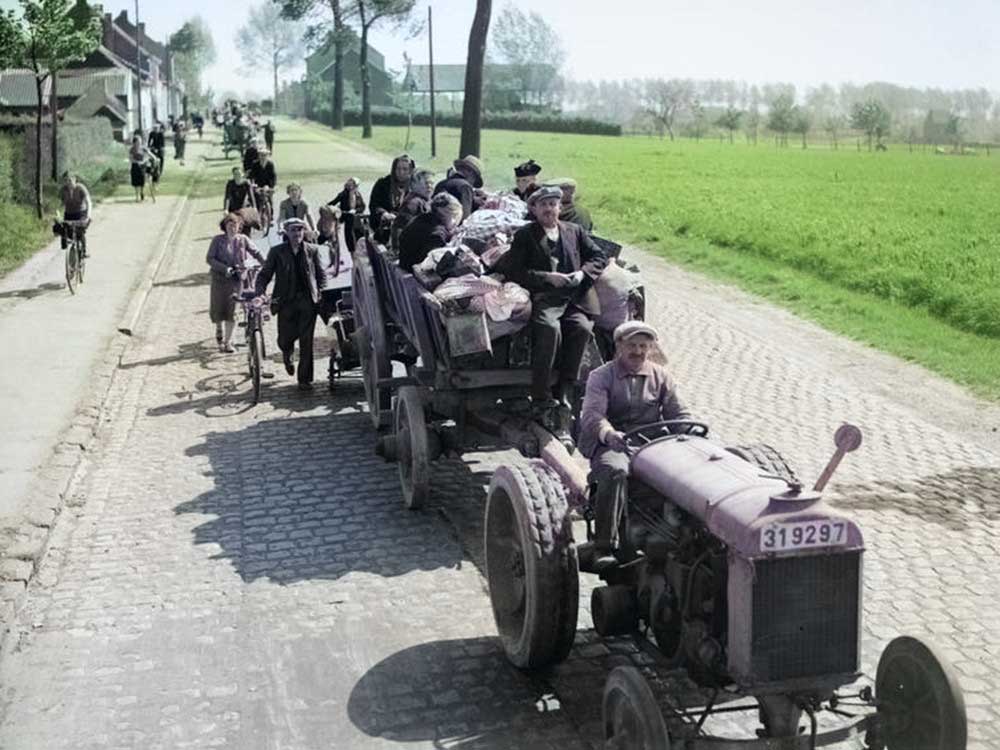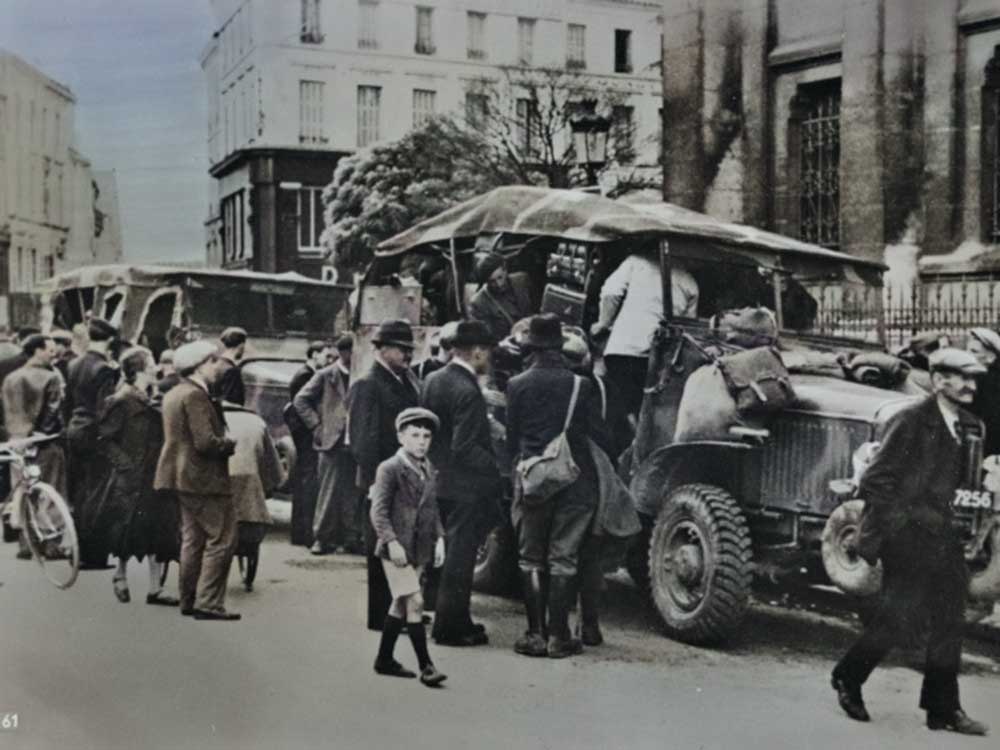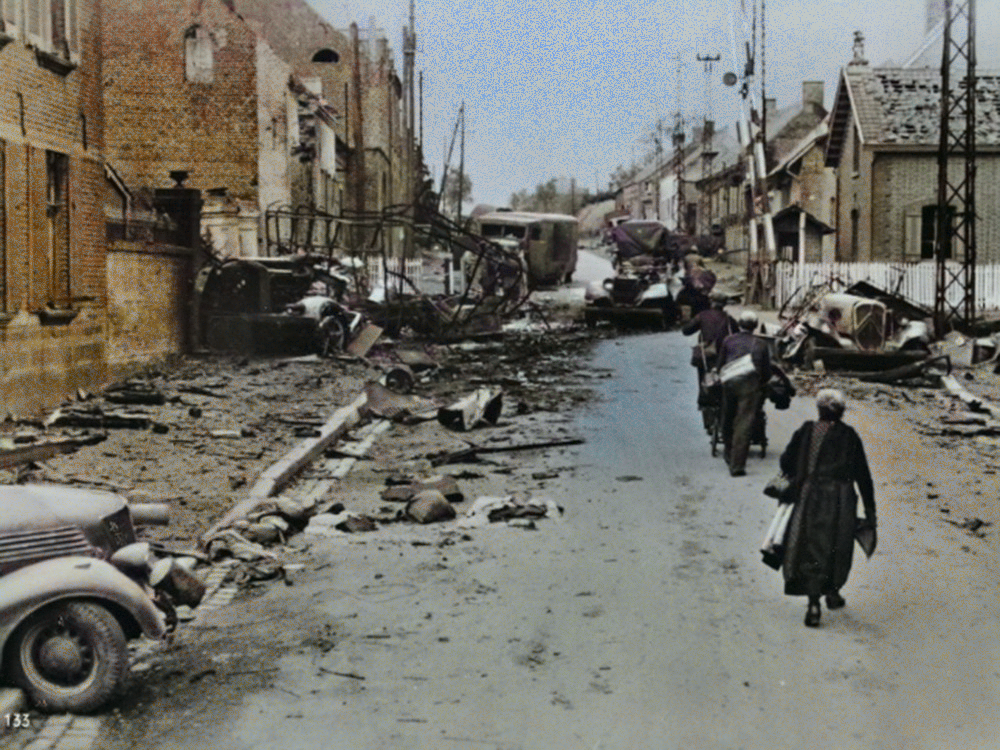Before the bloody battle of the winter of 1944-45, which remains a major one, a first battle took place in the Ardennes at the beginning of the Second World War, in 1940. On May 10, 1940, Hitler’s armored units launched a surprise attack and invaded Luxembourg, the Netherlands, and Belgium. Their objective was a rapid offensive towards France to bypass the defenses of the Maginot Line.
In just three days, despite the valiant resistance of the Belgian and Dutch troops, the German units, supported by intensive aerial bombardments, reached the Meuse. Among them, Sedan in France and Dinant in Belgium.
Planning for this surprise attack had already necessitated the evacuation of more than 500,000 German inhabitants from the border area to so-called safe zones. In particular Franconia, Thuringia and Hesse.
From then on, the advance of the German troops caused a massive exodus of the Belgian, Dutch, French, and Luxembourg populations, traumatized by the memories of 1914. They mingled with the columns of retreating soldiers to escape the fighting while under fire from German bombers.
Nearly 8 to 10 million civilians were thrown onto the roads, abandoning their memories and homes to flee to Paris and the southwest of France.





